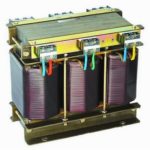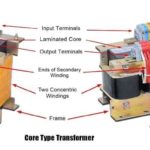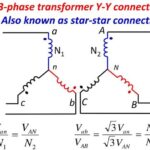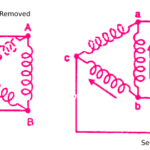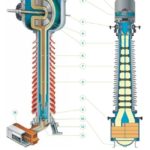An audio transformer is a type of power transformer, the main function of which is to transfer audio signals from one circuit to another. It can perform impedance matching during the signal transmission process to maximize the retention of the original quality of the signal. In most cases, the audio transformer consists of two parts: the magnetic core and the winding. The magnetic core is usually made of materials with a high magnetic conductivity, and the winding is wound from multiple strands of fine copper wire.
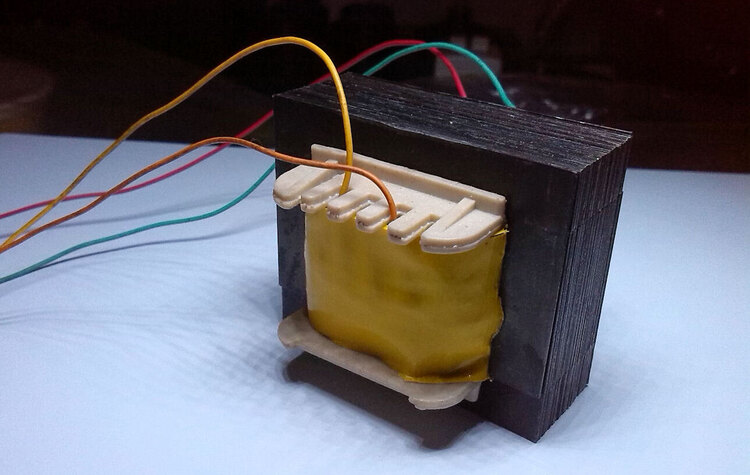
Audio transformers are mainly used to match the impedance between different devices to achieve stable and clear signal transmission. At the receiving end, the audio transformer can adjust the impedance of the input circuit to ensure impedance matching with the output circuit, thereby maximizing the retention of the original quality of the audio signal.
Principles of audio transformers
The basic principle of audio transformers is to use mutual inductance to achieve signal voltage ratio conversion. When the audio signal passes through the input end of the transformer, the coil on the iron core will generate magnetic flux, which will then be transmitted to another coil to generate a potential.
According to the typical transformer principle formula, when two charged bodies (i.e., coils on the transformer) are close, a magnetic field will be generated between them. In the audio transformer, the magnetic field generated by the charged body of the input coil (i.e., the signal excitation generated by the audio source) will induce the charged body of the output coil, thereby enabling the audio signal to be transmitted.
Types of audio transformers
According to classification, the main roles of audio transformers are as follows:
- Output transformers: They are used in audio equipment and playback devices, and they serve the role of impedance transformation in the circuit.
- Input transformers: Their main role occurs when inputting audio signals, where they also serve the role of impedance transformation in the circuit.
- Interstage transformers: Common interstage transformers can harmonize the working units at each stage of the amplifier.
- Line transformers: Line transformers are commonly used in wired broadcasting equipment. On the working unit of wired broadcasting, there are often many high-power amplifiers, and the lines are long. The long-distance transmission of audio will cause audio distortion.
Applications of audio transformers
Different types of transformers have different application fields. Here, the applications of these types of audio transformers are introduced separately.
Application of Input Transformer
As can be seen from the name of the input transformer, the function of the input transformer mainly occurs when inputting sound. Therefore, input transformers are mainly used in microphones and other input devices. The position of the input transformer is generally between the input device and the audio equipment, mainly playing the role of blocking noise, resisting magnetic field forces, and preventing distortion of sound input. The power of the input transformer is very small, but the sensitivity is very high, and it has good shielding performance.
Application of Output Transformer
The output transformer is used in audio equipment and playback devices. It is generally connected between the load circuit and the output circuit. Since it mainly plays the role of group exchange for the output audio, it is called an output transformer. The output transformer has good impedance capabilities. When it is used in audio equipment, it can reduce the frequency changes of the audio and achieve “high fidelity” output.
Role of Interstage Transformer
Common interstage transformers can harmonize the working units at each stage of the amplifier. It can adjust the voltage of the audio symbol, so that the impedance parameters between the working units reach their own matching degree, maintaining the normal operation of the entire working device. Therefore, most of the devices we see in our lives will use interstage transformers. Therefore, the interstage transformer is the most widely used type of audio transformer in life.
Application of Line Transformer
Line transformers are commonly used in wired broadcasting equipment. Because there are often many high-power amplifiers on the working unit of wired broadcasting, and the line is long, the long-distance transmission of audio will cause audio distortion. Therefore, people invented this type of audio transformer, the line transformer. With it, you can maintain the impedance matching of the entire line, so that the impedance value becomes a fixed parameter, and it will not change due to medium and long distance transmission.
Advantages of audio transformers
The main function of the audio transformer is to convert and match the voltage, power, and impedance of the signal. In practical applications, it can play the following roles:
- Impedance Matching
Audio transformers can adjust the impedance between the input and output ends as needed to achieve impedance matching. This can maximize the retention of the original quality of the audio signal and prevent distortion during signal transmission. - Signal Isolation
Audio transformers can also isolate signals, separating the input signal from the output signal to ensure that the signals do not interfere with each other. This is very important for scenarios where multiple audio devices need to be used simultaneously. - Gain Adjustment
Audio transformers can achieve the effects of signal gain or attenuation by adjusting the transformation ratio between the input and output ends. This is very useful for scenarios where the strength of the audio signal needs to be adjusted. - Noise Reduction
Through effective isolation and impedance matching, audio transformers can reduce noise and interference in audio signals, improving the purity and clarity of the audio signal. This is critical for scenarios that require high-quality audio signal processing.
In summary, as a transformer for audio signals, audio transformers have characteristics such as linear transmission, low distortion, and high conversion efficiency, and are widely used in audio systems, amplifiers, recording equipment, and other fields. Its main functions include impedance matching, signal isolation, gain adjustment, and noise reduction, etc. It can maximize the retention of the original quality of the audio signal and improve the purity and clarity of the audio signal.


